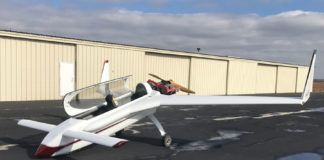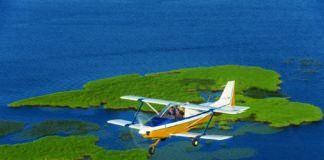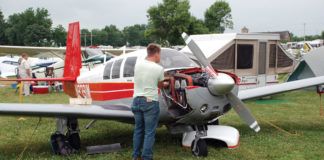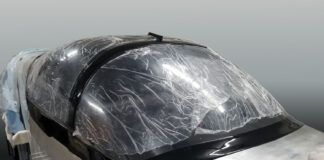There was a serious discussion on the Pilots of America newsboard (www.pilotsofamerica.com) about calibrating your airspeed indicator. Some claimed that it was a straight-line function of pressure versus airspeed, some claimed it was a completely nonlinear and difficult equation, and those of us who have done the math know it is a relatively simple task to go from pressure to airspeed.
Let’s back up just a minute and see if we can figure out what drives the airspeed indicator, the defining document(s) that tell us how to convert from pitot pressure to airspeed indication, and how we might rig up a simple calibration tool of our own.
What Is an ASI?
First, the airspeed indicator (ASI) is nothing more than a differential pressure gauge. You put ram air pressure from the pitot tube on one port and ambient (static) pressure on the other, and the airspeed needle measures the pressure differential. Yes, this differential is a function of altitude, and there is an old rule of thumb about 2% per thousand feet. That is, at sea level, sitting still, you have roughly 15 psi of pressure on the pitot tube and 15 psi on the static port, and the airspeed reads zero. After you start your takeoff roll and climb out, and the airspeed reads 100 mph, the static port (assuming a very shallow climb near the ground) is still at 15 psi, but the pitot pressure has increased to about 15.17 psi. Climbing at constant indicated airspeed, when you reach pattern altitude at 1000 agl/msl your airspeed indicator may read 100 mph, but your actual airspeed-the so-called true airspeed-is 2% more, or 102 mph. At 1000 agl/msl your static pressure may have dropped to 14 psi, but your pitot pressure has dropped an equal amount to 14.17 psi, so there is a constant 0.17 psi differential presented to the ASI.
The problem then resolves itself to finding a way of generating a precise amount of low-pressure air. We could use a precision pressure gauge and a source of compressed air, but that method is (a) expensive and (b) begs the question as to whether the precision gauge or the airspeed indicator is out of calibration. We could use a column of mercury, but that stuff is expensive and it’s toxic. Or we could use plastic tubing, a yardstick and a water column. Guess which way I am going.
The first table (see link above) gives the relationship between airspeed (mph), airspeed (knots), water column (inches) and air pressure (psi). The second table (see link above) does the same thing, but the independent variable is water column in inches and the rest of the dependent variables as shown above. The equation for all this nonsense is relatively simple and gives results to within 1% from 50 mph to 250 mph. Airspeed (mph) is equal to the square root of (inches of water times 1526.5). Or to put it in better mathematical form, A = √(i x 1526.5) where A is airspeed in mph, and i is water column difference in inches.
The source for all of this information? A fairly simple Mil-Spec document called AN 05-10-24 that specifies the water column in steps of 10 mph from 50 to well over 250 mph. The data and equations in this article were derived directly from this document.
Build It
The mechanics of rigging up the water column are simple, and materials include a 6-foot length of clear plastic tubing bent into a U shape (tubing inside diameter to match the airspeed pitot port fitting), a wood yardstick, a few tie-wraps to hold the tubing to the yardstick and some water. Refinements to the parts list are red food coloring in the water to make the water column easier to read, a drop or two of dishwashing liquid into the water to make the meniscus (the little lens-shaped area at the top of the water in the tube) a little flatter and a turkey baster to put the water into the tube. If you spend more than $5 on the whole shebang, you don’t scrounge very well. And, as noted in a prior article on the subject (KITPLANES, July 1989) the ultimate California wine snob will use Gamay Beaujolais instead of water with the normal 1.2345% wine correction factor.
Operation? Trivially simple. Fill the plastic tubing about a quarter of the way up from the bottom (say, 6 inches or thereabouts), and attach one of the free ends of the tubing to the airspeed indicator fitting. Be careful. If any water gets into the airspeed indicator, you might just as well start pricing a new one. Using either of the tables shown, begin filling the open end of the plastic tube with water and noting the reading on the ASI. Simplicity itself.
Can you use this device in the aircraft without removing the ASI? Certainly. Just take every precaution to keep water out of the ASI. If I were using this device on a regular basis, Id stuff the ASI end of the tubing with lightly packed cotton so that the air pressure will get through. But if the calibration stick got upended, Id at least have a fighting chance to pull the tubing off of the ASI fitting before any water got into the mechanism.
Too much fun. I think a little treatise on digital logic might be in order next month. Specifically, Im going to show you how to use the 4000 series of (cheap) CMOS digital logic to implement simple and useful things for your airplane. Until then, just remember that this snow isn’t going to be on the ground forever, and we have a whole summer of flying ahead of us.














Jim does it again, he is sloppy with his formulas!
“Airspeed (mph) is equal to the square root of (inches of water times 1526.5). Or to put it in better mathematical form, A = √(i x 1526.5) where A is airspeed in mph, and i is water column difference in inches.”
That is the formula for knots, NOT mph.
For mph the formula is:
mph = square root of (inches of water times 1980)